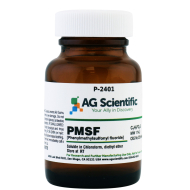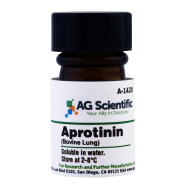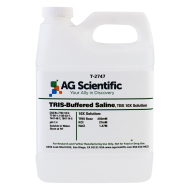Puromycin continues to be applied for genomic purposes. In this protocol, puromycin is utilized in lentiviral transduction in shRNA particles.
Puromycin continues to be applied for genomic purposes. In this protocol, puromycin is utilized in lentiviral transduction in shRNA particles.
DAY 1
- Plate target cells in a 12-well plate 24 hours prior to viral infection.
- Add 1 ml of complete optimal medium (with serum and antibiotics) and incubate cells overnight. The cells should be approximately 50% confluent on the day of infection & (Day 2).
DAY 2
- Prepare a mixture of complete medium with Polybrene (hexadimethrine bromide) at a final concentration of 5 µg/ml.
- Remove media from plate wells and replace with 1 ml of this Polybrene/media mixture per well (for a 12-well plate).
- Thaw lentiviral particles at room temperature and mix gently before use.
- Infect cells by adding the shRNA Lentiviral Particles to the culture.
- Swirl the plate gently to mix and incubate overnight. The amount of viral particles to use varies greatly depending on the characteristics of the cell line used.
DAY 3
- Remove the culture medium and replace with 1 ml of complete medium (without Polybrene).
- Incubate the cells overnight.
DAY 4
- To select stable clones expressing the shRNA split cells 1:3 to 1:5, depending on the cell type, and continue incubating for 24-48 hours in complete medium.
DAY 5-6 and forward
- Select stable clones expressing the shRNA via Puromycin dihydrochloride selection.
- For puromycin selection, use an amount sufficient to kill the non-transduced cells. Puromycin concentrations range from 2 to 10 µg/ml are usually sufficient, but a puromycin tritation is recommended when using a new cell line.
- Replace medium with fresh puromycin-containing medium every 3-4 days, until resistant colonies can be identified. Pick several colonies, expand them and assay them for stable shRNA expression.
- Wash cells once with PBS.
- Lyse cells in 100 µl of a 1:1 mixture of Electrophoresis Buffer and RIPA Lysis Buffer by gently rocking the 12-well plate or by pipetting up and down.
- Sonicate the lysate on ice if necessary.
- Blotto A (for general use): 1x TBS, 5% milk, 0.05% Tween-20. Available Pre-made.
- Blotto B (for use with anti-phosphotyrosine antibodies): 1x TBS, 1% milk, 1% BSA, 0.05 Tween-20. In some cases, milk may be left out entirely, but this will result in somewhat higher backgrounds. Available pre-made. For all phospho-specific antibodies: Add 0.01% (v/v) of each Phosphatase Inhibitor Cocktail to inhibit phosphatase activity.
- Diaminobenzidine tetrahydrochloride (DAB): Dissolve 5 mg DAB in 100 ml 100 mM Tris-HCl, pH 7.6, and add 0.1 ml 0.3% hydrogen peroxide. Prepare fresh DAB solution daily.
- Electrophoresis buffer (2X): 100mM 2-(N-Morpholino)- ethanesulfonic acid(MES), 10 mM Na EDTA, 15% glycerol, 1.5% SDS, 0.3% Triton X-100, 100mM TCEP-HCL, 7.5 mM DTT, 0.0025% Bromophenol Blue. Available pre-made.
- Phosphate buffered saline (1x PBS): 9.1 mM dibasic sodium phosphate, 1.7 mM monobasic sodium phosphate, and 150 mM NaCl. Adjust pH to 7.4 with NaOH. Available pre-made in liquid and powder forms
- RIPA Lysis Buffer: 1x PBS, 1% Nonidet P-40 or Igepal CA-630, 0.5% sodium deoxycholate, 0.1% SDS. This may be made in large volumes. Add inhibitors at time of use from the following stock solutions. Available pre-made.
- Subbing solution: 0.3% (w/v) gelatin, 0.05% chromium potassium sulfate in distilled H2O.
- Tris buffered saline (1x TBS): 10 mM Tris-HCl, pH 7.4; 150 mM NaCl. Available pre-made in liquid form.



